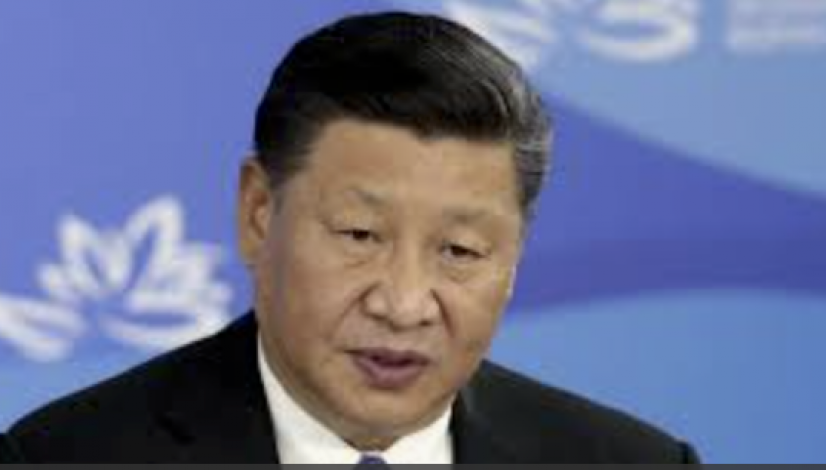Xi laying the groundwork for future concessions

President Trump’s renewed threats to increase tariffs on imports from China sent stocks into a tailspin on Monday.
Initial optimism about the discussions between Chinese President Xi Jinping and President Trump gave way to skepticism when Trump tweeted “I am A Tariff Man.” Traders decided not much will come of the trade truce reached at the Group of 20 (G20) summit.
Traders may be mistaken. Here’s what analysts are missing: President Xi Jinping has spent months preparing for the moment that has now come; the moment when he has to accede to the White House’s demands.
While President Trump may shoot from the hip, Xi does not. Chinese negotiations and planning are painstaking and long-term. Beijing wants and needs to relax trade tensions and has been preparing to do just that.
But, any move by Beijing to correct its bad behavior or to reduce unfair trade practices must appear to have come from President Xi. He must look like he is following through on long-standing policies as well as doing the right thing for his country; he cannot appear to bow to Trump’s White House. It’s all about “face.”
Hence, over the past year, since trade tensions between China and the U.S. ratcheted up, Xi has positioned himself as the (unlikely) champion of free and fair trade. In speech after speech, he has embraced globalization and criticized protectionism. He has promised to open China’s markets and lauded lower barriers to entry.
In January 2017, Xi made what some considered his international debut, delivering the keynote speech at the World Economic Forum in Davos. His address turned out to be a full-throated endorsement of globalization, delivered days before President Trump’s inauguration.
He encouraged his fellow leaders to “commit ourselves to growing an open global economy to share opportunities and interests through opening-up and achieve win-win outcomes.”
Last April, in his first public speech after the trade dispute with the U.S. escalated, Xi appeared at his country’s annual Boao Forum in Asia, portraying himself as a champion of “free trade and world order.” He said, “China’s door of opening up will not be closed and will only open wider.”
In that address, he vowed to ease restrictions on imported autos and repeated earlier promises to open up China’s financial markets for foreign firms. In addition, he committed to strengthening intellectual property rights. Those are all top priorities of the Trump White House.
In September, Xi toured various industrial sites, again raising his voice against “unilateralism and protectionism.”
At a state-owned factory in the northeastern province of Heilongjiang, the Chinese president acknowledged:
“Internationally, it’s becoming more and more difficult…to obtain advanced technologies and key know-how. Unilateralism and trade protectionism are rising, forcing is to adopt a self-reliant approach. This is not a bad thing.”
President Trump would agree.
About the same time, China reduced tariffs on imports of 1,585 items, beginning Nov. 1. The government estimated that as a result of the cuts, China’s average tariffs were lowered to 7.5 percent from 9.8 percent in the prior year. That concession did not get much play in the media; it should have.
More recently, President Xi spoke at the opening of the first-ever Chinese International Import Expo in Shanghai. Note the theme of this new forum: expanding imports into China which is, of course, exactly what the Trump White House wants Beijing to do.
Every other country has export forums; this was a one-off, and it was big, attended by 3,600 companies from more than 150 countries.
Once again, Xi denounced protectionism and trading practices that he described as “law of the jungle” and “winner-takes-all.” That is how Trump might portray China’s aggressive approach. At the Import Expo, Xi again promised to open China’s economy and to safeguard the interests of foreign firms operating there.
At about the same time, American Express became the first U.S. credit card company given permission to build a payments network in China. Coincidence? Doubtful.
Some China-watchers have dismissed Xi’s embrace of free trade as cynical or downright dishonest. His positioning could, however, be interpreted as preparation for making the kinds of concessions the U.S. is demanding.
Many suspect that for months, Chinese officials did not take President Trump seriously; Beijing now appears to believe that the White House is committed to leveling the playing field and reducing our trade imbalance.
Xi’s campaign in favor of openness will allow him to backtrack from practices like forced technology transfers, resolving the trade dispute without losing face.
After all, President Xi faces not only increasing resistance from the U.S.; EU nations and Australia have also pushed back against China’s unfair trade practices. Those countries, too, have been robbed of their intellectual property. They, too, have seen critical industries like steel production hurt by dumping from state-owned enterprises.
One of Trump’s victories at the G-20 is that the communique issued by the group of nations called for reform of the World Trade Organization (WTO).
Everyone knows the WTO is outmoded and unable to rein in China’s malpractice; it does not deal effectively with state-owned enterprises, for instance. Finally, the White House got the group of nations to agree that reform is an urgent matter.
In the days following the G20 summit, investors were alarmed that China’s state media did not spell out the 90-day delay in tariff hikes and various other particulars agreed to in Argentina. More recently, officials have acknowledged some of the details of the discussion.
Also, White House trade advisor Peter Navarro told Fox News that President Xi addressed a long list of demands laid down by the White House, a remarkable negotiation with a head of state. China needs a deal. The U.S. wants a deal. It is quite possible that there will be a deal.
Now if President Trump could just stop tweeting …
Published on The Hill




